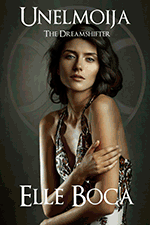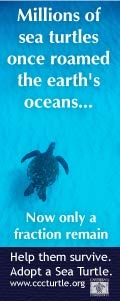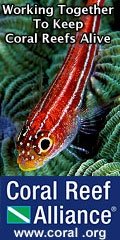Luxury Travel Review

New Florida Keys property made trip worthwhile
Photo by Gary Cox and article by Elena del Valle
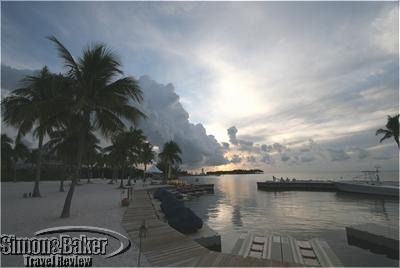
Sunset at Tranquility Bay
When we planned a weekend getaway in the Florida Keys recently, we went out of our way to find something special. It had been a couple of years since our last weekend stay in the famed string of islands forming the southernmost tip of the continental United States. Between heavy traffic and ho hum accommodations, past visits had left us disappointed. This time, we wanted something out of the ordinary.
Although Mother Nature wasn’t cooperative, it rained on and off most of the weekend; we had a relaxing and fun retreat. Tranquility Bay Beach House Resort, the new luxury beachfront property in Marathon with spacious beachfront suites where we stayed, was delightful and home to the Butterfly Café, an up-and-coming Keys gourmet restaurant. Click here for more about Tranquility Bay Beach House Resort

Exploring Belize’s ecotourism side
Article and photos by Josette King
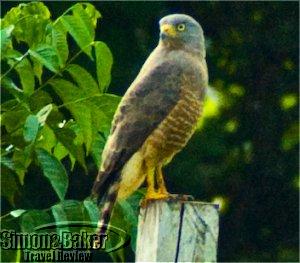
Roadside hawk
Thanks to its Caribbean coastline graced with the longest barrier reef in the western hemisphere, Belize has long been considered by water sport enthusiasts one of the premiere scuba diving and snorkeling destinations in the world. The sandy islands that straddle the reef, known locally as cayes, reputed for their white coral sand beaches and spectacular underwater canyons remain the country’s greatest attraction.
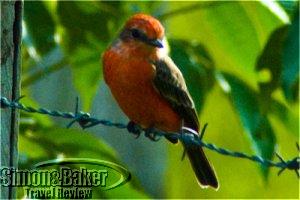
Vermillion flycatcher
Yet a mere ninety minute drive inland another Belize of unspoiled rain forests rich in wildlife, birds and Mayan archeological treasures is beginning to capture the interest of eco-tourists. The Cayo District, with its vast expanses of verdant rolling hills along the Macal and Mopan rivers, offers especially scenic attractions. It is home to the two most important Maya ruins in the country, Caracol and Xunantunich, as well as several nature reserves including the reputed Blue Hole and Guanacaste National Parks.
I recently enjoyed a visit to this easily accessible but remarkably secluded area of Belize where toucans still outnumber tourists and where intimate eco-lodges offer a warm welcome. Click here to read about my visit to Belize including the Cayo District and Casa del Caballo Blanco.
Amateur photographer, traveler showcases Buddhist art through time in new book
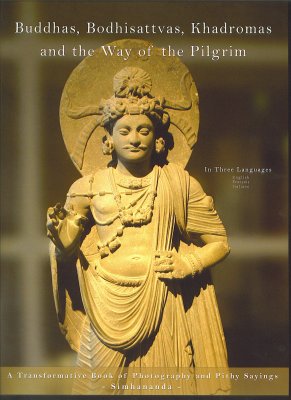
Buddhas, Bodhisattvas, Khadromas and the Way of the Pilgrim cover
In a recently published photo book, Buddhas, Bodhisattvas, Khadromas and the Way of the Pilgrim: A Transformative Book of Photography and Pithy Sayings (Orange Palm Publications, $79.95), Montreal based Simhananda, an amateur photographer, and Dadi Darshan Dharma, a book author, dedicated 224 pages to images of Buddha and Buddhism through the ages.
Almost every page of the book features a photo. There are 100 large and 201 small images of art depicting Buddha and Buddhist art. There is a glossary in the back of the book for readers, who like us, don’t know the meaning of some of the exotic words used in the book. Bodhisattva, for example, means a Buddha who has unselfishly given up his liberation temporarily to help mankind.
The hardcover book allows armchair travelers, Buddhists and spiritual enthusiasts to view art depicting Buddha from the comfort of their homes. Each page includes one or more photos and short sayings, in English, French and Italian, intended to be inspirational, spiritually uplifting and sometimes humorous. Although we couldn’t find any descriptions of the photos, when or where they were taken in the book, they capture crisp, blurry, stunning, striking, and colorful images set next to short inspirational words. The combination of the words and images is designed to further the author’s desire to “help elevate the mind toward the Divine” and to console and comfort worldwide suffering and death.
Simhananda, which means lion’s roaring, only appears in silhouette in the book and is described in promotional materials as a private man. He recently produced four calendars and is working on another photography book about nature. He also authored a book on Zen Buddhism. Dadi Darshan Dharma, also in silhouette and a resident of Canada, authored several books on spirituality including Paradisal Plums from which the sayings in Bodhisattvas, Khadromas and the Way of the Pilgrim were reproduced.
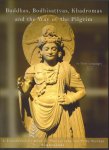
Click here to buy Buddhas, Bodhisattvas, Khadromas and the Way of the Pilgrim
Zambia: my favorite destination for scenic wilderness, dense game concentration and luxury accommodations
Article and photos by Josette King
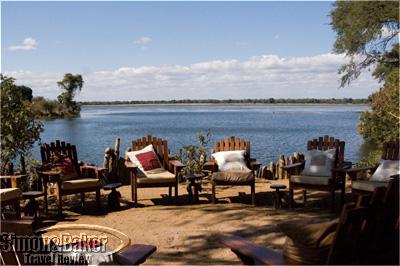
Chongwe River Camp where the Chongwe and Zambezi rivers meet
After an exciting visit to the South Luangwa National Park in the fall of 2006, I returned to Zambia last year. In the Luangwa Valley, particularly lush in 2007 after experiencing intense seasonal flooding in January and February, I especially enjoyed Nkwali, the flagship camp of Robin Pope Safaris.
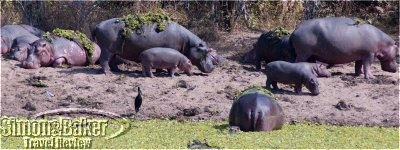
Hippos enjoyed the morning sun by their waterhole near Nkwali
Located on a prime vantage point on the east bank of the Luangwa River, Nkwali coupled the casual atmosphere and intimate proximity to wildlife that only a bush camp can provide with the indulgent amenities of the best safari lodges. From there, I traveled deep into the park to Luwi. This remote seasonal camp of reed and thatch huts offered a rare opportunity to experience one of the last traditional bush camps as envisioned by the renowned late conservationist and guide Norman Carr.
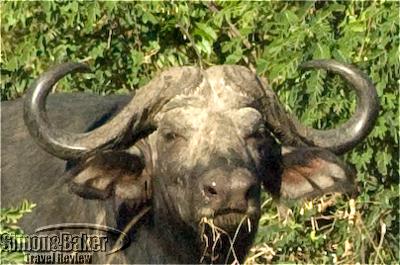
Cape buffalos throve in the Lower Zambezi National Park
I went on to explore the Lower Zambezi National Park. Established in 1983, it is the most recent of country’s national parks. Although still relatively underdeveloped, this stretch of wilderness is wedged between the Zambezi River and the Zambezi Escarpment; a privileged location that offers remarkably picturesque scenery and an amazing concentration of wildlife along its 120 kilometers of river frontage.
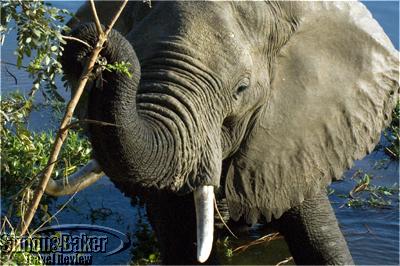
An elephant emerged from the Zambezi at Sausage Tree Camp
The river bank is home to several highly reputed wilderness camps and lodges, including the Chongwe River Camp, with its panoramic view of the confluence of the Chongwe River and the Zambezi rivers; the Chiawa Camp blended so unobtrusively into its surroundings that elephants and buffalos routinely paraded within feet of the tents on their way to the river; and the whimsical Sausage Tree Camp with its pristine conical Bedouin tents peering through the riverine forest canopy at the scenic entrance of the Chifungulu Channel.
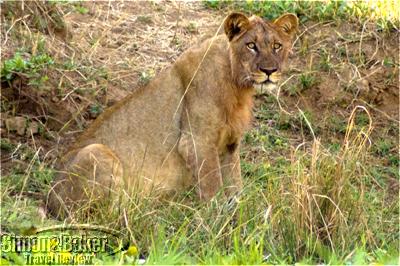
A lioness
My journey concluded with a visit around Victoria Falls, where I experienced first-hand the award-winning accommodations and hospitality of Tongabezi, as well as the stunning architecture and sweeping vistas of the recently opened Stanley Safari Lodge.
Are you thinking of traveling to Zambia? Click on the following hyperlinks to read dedicated articles on Zambia destinations and properties visited by Simon & Baker travel teams Zambia, Lower Zambezi National Park, South Luangwa National Park, Chiawa Camp, Chongwe River Camp, Luwi, Nkwali, Sausage Tree Camp, Stanley Safari Lodge and Tongabezi.
Travel pill case is convenient to carry vitamins, medications
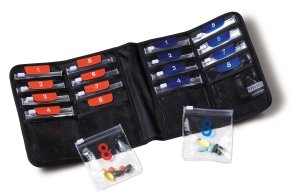
We used to put our vitamins and supplements in small plastic bags or Ziploc bags when we traveled. A couple of years ago we found this Lewis N. Clark Day/Night Pill Organizer for $12. It has been helpful and practical, especially for extended trips.
The lightweight water repellent folding case has 16 individual slide locking vinyl pouches and comes with a one year warranty. Thanks to the vinyl casing the pills are protected from water, dust, and anything that may spill on the case during a trip. We’ve had several spills including mosquito repellent, body lotion and plain rain water wet the suitcases in the past so the extra protection is welcome.
Inside the pill case is divided into two halves of eight pouches each. A Velcro closure keeps the case secure during travel preventing the pills from falling out. Although prescription and essential meds travel in our hand luggage, we often send the vitamin supplements in the pill case and they have always arrived intact.
We are able to fit pills separately for two people for eight days, day and night pills for one or two people for eight days or what we usually do, fill the case with pills for both of us for 16 days.
We often remove the plastic pouch with that day’s pills and carry it with us to breakfast and through the day. At the end of the day or the following morning we replace the empty pouch with a new one. We have traveled in the United States, Africa, Europe, and the Caribbean with the pill case and it has suffered minimum damage.
In two years of regular use we lost one of the vinyl pouches and broke the plastic closure of another. It’s possible to purchase replacement pouches for about $5. – Elena del Valle
Click here for more information on Lewis N. Clark Day/Night Pill Organizer
South African wine maker debuts top tier blend
Article by Elena del Valle and photos by Gary Cox
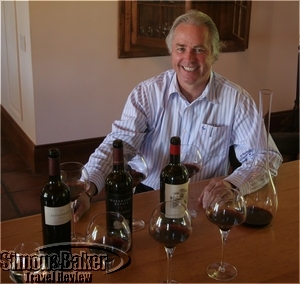
Kevin Arnold at The Jem tasting
For years South African wine makers have been making inroads into the world wine markets. Slowly their wines have gained favor among wine lovers around the globe. In the last 20 plus years the production volume and number of vintners has increased manifold. For example, in 1979 there were 24 wineries in Stellenbosch and now there are 187.
At the same time, quality wines have been making appearances in the domestic market and abroad with increasing frequency. This is due in part to South Africa’s high percentage of small producers who have to excel in their work to survive in a highly competitive world wine industry.
A prime example of this is Kevin Arnold of the Waterford Estate in Stellenbosch in the Cape Wineland area near Cape Town. After years of producing wines he realized that to make his mark in the world he needed something special. In 2001, he planted 11 varieties of grapes in the hope of finding the perfect blend. He waited patiently and eventually discovered that a combination of eight of the original 11 resulted in the type of wine he sought. The Jem, named for his business partner Jeremy Ord, was launched initially in South Africa and Sweden in November 2007. It will be available in London in January 2008 and in New York in February 2008.
During a recent visit to South Africa, we met the well known vintner and were among the first to taste The Jem 2004, the first wine released from the blend. It is new yet well set in a familiar European base. What makes it unique is precisely that combination of tradition and novelty. French Bordeaux and South African flavors join to form a rich and smooth wine with a memorable finish.
Arnold knew he was on the right path when the wine continued to reach spicy aromas and flavor. “That is the ultimate test. That is the hallmark of a great wine,” said Arnold. “I want to be known as South Africa’s premier red wine producer. I think you need to enjoy what you do and I certainly do; and seeing our wine served at top restaurants is a boost.”
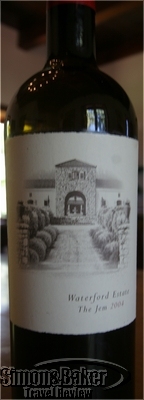
The Jem 2004
The Jem is made with Cabernet Sauvignon (35%), Cabernet Franc (24.5%), Shiraz (15%), and (Mourvèdre 10.5%), as well as Petit Verdot, Malbec, Merlot and Barbera. The fermentation process took place over 19 months in a combination of 40 percent first fill French oak with the remainder second fill in French barrels. It is due to mature between 2010 and 2018.
In addition to taking a bold innovative step by creating a new blend Arnold is trailblazing by establishing a quality price point of R680 surpassing the $100 mark. Last we heard sales of The Jem were brisk at the winery for the limited production wine. We suspect that as the word spreads among Waterford enthusiasts and the wine is released in early 2008 in the United Kingdom and United States, two of the winery’s top three export markets, the remaining bottles will disappear before much longer.
Arnold who has been in the wine business for more than 30 years wants to make a statement to the world with his wine. He wants everyone to know South Africa occupies a distinctive and worthy place in the wine firmament. When he was testing the wine he was thrilled to discover it had staying power. He hopes The Jem will mark a significant milestone in his quest for distinction.
Arnold’s winery is certainly on the right path. The Waterford Estate produces a limited quantity of wines and specializes in reds. The winery only uses its own grapes and 20 percent of all sales take place at the award winning cellar door. We visited the estate recently and enjoyed Waterford’s chocolate wine tasting. Click here to read about the estate and chocolate wine tasting.


